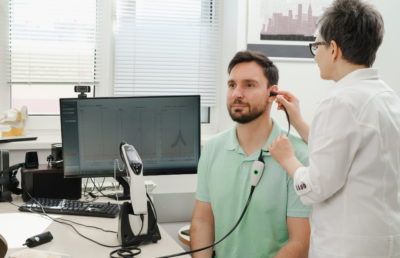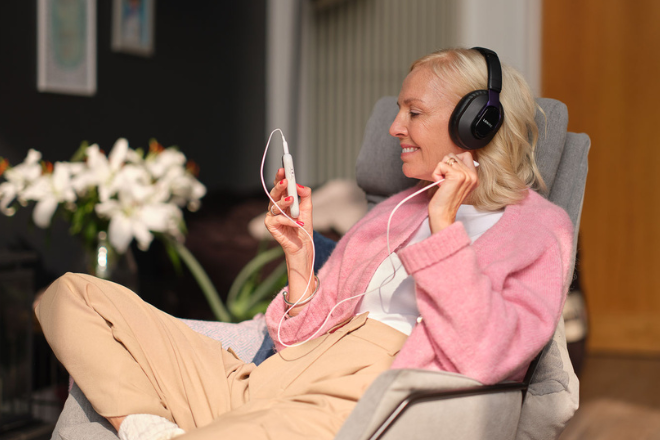Frequently Asked Questions
How long do hearing aids last in Chicago?
The lifespan of hearing aids in Chicago typically ranges from 3 to 7 years, depending on the type, usage, and maintenance. Regular check-ups and proper care can help extend their longevity.
Can an audiologist in Chicago help with tinnitus treatment?
Audiologists in Chicago can indeed assist with tinnitus treatment. They offer personalized evaluation and management strategies to help alleviate symptoms and improve your quality of life.
Are there any hearing aid discounts in Chicago?
Hearing aid discounts in Chicago are available through various programs and services. Many providers, including Chicago Hearing Services, offer financing options and seasonal promotions to help make hearing aids more affordable for patients.
Do audiologists in Chicago accept insurance plans?
Audiologists in Chicago typically accept various insurance plans. It's best to contact individual practices directly to confirm specific coverage and benefits related to your hearing care needs.
Can I get a free hearing aid consultation in Chicago?
You can receive a free hearing aid consultation in Chicago at Chicago Hearing Services. We offer personalized assessments to help determine your hearing needs and explore suitable options for you.
Do hearing aids in Chicago come with a warranty?
Hearing aids in Chicago typically come with a warranty. Most manufacturers offer warranties that cover repairs and replacements for a specified period, ensuring peace of mind for users.
Can an audiologist prescribe hearing aids?
Audiologists can prescribe hearing aids. They are trained to assess hearing loss and recommend appropriate hearing devices tailored to each patient's needs, ensuring personalized care for optimal hearing health.
Where can I buy hearing aids in Chicago?
You can buy hearing aids in Chicago at Chicago Hearing Services, where we offer a range of personalized audiology services and high-quality hearing aids tailored to your needs. Schedule an appointment to explore your options today.
How much do hearing aids cost in Chicago?
The cost of hearing aids in Chicago varies widely, typically ranging from $1,000 to $4,000 per device, depending on the technology and features. It's best to consult with local audiology providers for personalized pricing and options.
How do I find an audiologist in Chicago near me?
Finding an audiologist in Chicago near you is simple. You can search online for local audiology clinics, check reviews, or ask your primary care physician for recommendations to ensure you receive personalized hearing care.
What does an audiologist in Chicago diagnose and treat?
Audiologists in Chicago diagnose and treat various hearing and balance disorders, including hearing loss, tinnitus, and auditory processing issues. They provide personalized treatment plans and support to enhance patients' overall auditory health.
Can an audiologist in Chicago help with hearing aid selection?
An audiologist in Chicago can assist with hearing aid selection by evaluating your specific hearing needs, recommending suitable options, and guiding you through the fitting process to ensure optimal comfort and performance.
What are common audiology services in Chicago clinics?
Common audiology services in Chicago clinics include hearing evaluations, hearing aid fittings, tinnitus management, and personalized treatment plans tailored to individual needs. These services aim to enhance patients' hearing health and overall quality of life.
What brands of hearing aids are available?
The brands of hearing aids available include well-known names such as Phonak, Oticon, Widex, ReSound, and Signia, ensuring a variety of options tailored to meet individual hearing needs.
How to choose the right hearing aid?
Choosing the right hearing aid involves assessing your specific hearing needs, lifestyle, and budget. Consult with an audiologist to explore options that suit your level of hearing loss and preferences for comfort and usability.
What factors affect hearing aid lifespan?
The factors that affect hearing aid lifespan include the quality of the device, frequency of use, maintenance practices, environmental conditions, and battery care. Regular servicing and proper handling can significantly extend their usability.
Are hearing aids effective for all types of loss?
Hearing aids are effective for many types of hearing loss, particularly mild to moderate cases. However, their effectiveness may vary based on the severity and type of hearing loss, so a professional evaluation is essential for optimal results.
How often should hearing aids be checked?
Hearing aids should be checked at least once a year to ensure they are functioning properly and to make any necessary adjustments. Regular check-ups help maintain optimal hearing health and device performance.
Where to find hearing aid repair services?
Hearing aid repair services can be found at local audiology clinics, including Chicago Hearing Services, or through authorized hearing aid retailers. It's best to contact them directly for assistance with repairs and maintenance.
What are the latest technologies in hearing aids?
The latest technologies in hearing aids include advancements such as Bluetooth connectivity for seamless audio streaming, rechargeable batteries for convenience, and artificial intelligence for personalized sound adjustments, enhancing overall listening experiences for users.
Can I trial hearing aids before purchasing?
You can trial hearing aids before purchasing to ensure they meet your needs. At Chicago Hearing Services, we offer a trial period that allows you to experience the benefits of hearing aids in your daily life.
What should I expect during a consultation?
During a consultation, you can expect a thorough evaluation of your hearing health, including a discussion of your medical history, a hearing assessment, and personalized recommendations for treatment options tailored to your needs.
How can I adjust to wearing hearing aids?
Adjusting to wearing hearing aids can be a gradual process. Start by wearing them for short periods each day, gradually increasing the time as you become more comfortable. Focus on familiar environments to ease the transition.
What features do modern hearing aids offer?
Modern hearing aids offer advanced features such as Bluetooth connectivity, noise reduction, directional microphones, and customizable sound settings, enhancing the listening experience while allowing users to connect seamlessly with their devices.
How to clean and maintain hearing aids?
Cleaning and maintaining hearing aids involves regular inspection and gentle cleaning. Use a soft, dry cloth to wipe the outer surfaces and a small brush for the microphone and receiver openings, ensuring they remain clear of debris.
What should I disclose to my audiologist?
You should disclose any medical history, current medications, hearing difficulties, and lifestyle factors that may affect your hearing. This information helps your audiologist provide the best personalized care and treatment options for your needs.
Can hearing aids connect to smartphones?
Hearing aids can connect to smartphones. Many modern hearing aids are equipped with Bluetooth technology, allowing users to stream calls, music, and other audio directly from their smartphones for enhanced listening experiences.
What are the side effects of hearing aids?
The side effects of hearing aids can include discomfort, earwax buildup, and occasional feedback noise. Some users may also experience a sensation of fullness in the ear or temporary changes in sound perception as they adjust to the device.
How does humidity affect hearing aids?
Humidity can significantly affect hearing aids by causing moisture buildup, which may lead to malfunctions or reduced performance. It's essential to keep hearing aids dry and use protective accessories to mitigate these effects.
What local resources support hearing aid users?
Local resources that support hearing aid users include audiology clinics, support groups, and community organizations that offer education, counseling, and assistance with hearing aid maintenance and adjustments. These resources help users navigate their hearing health effectively.





